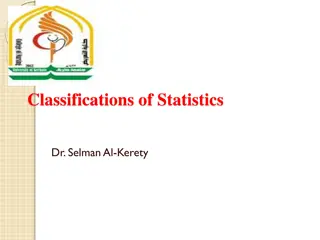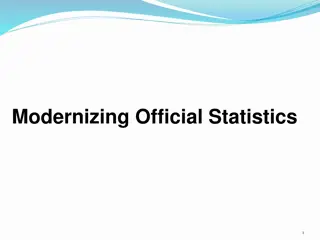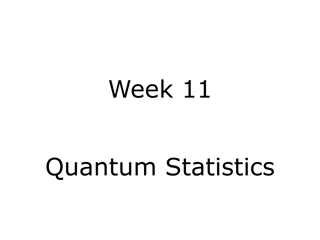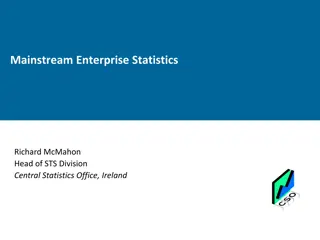
Statistics in Further Mathematics: Surveys, Confidence Intervals, and Simulations
Explore the world of statistics in further mathematics through surveys, confidence intervals, and simulations. Learn about sampling techniques, population mean estimation, and the importance of confidence intervals in data analysis. Discover how organizations like MEI are enhancing mathematics education.
Download Presentation

Please find below an Image/Link to download the presentation.
The content on the website is provided AS IS for your information and personal use only. It may not be sold, licensed, or shared on other websites without obtaining consent from the author. If you encounter any issues during the download, it is possible that the publisher has removed the file from their server.
You are allowed to download the files provided on this website for personal or commercial use, subject to the condition that they are used lawfully. All files are the property of their respective owners.
The content on the website is provided AS IS for your information and personal use only. It may not be sold, licensed, or shared on other websites without obtaining consent from the author.
E N D
Presentation Transcript
Statistics in Further Mathematics
A travel survey In 2011 30% of employed people in Bromley travelled to work by train. It is a few years since 2011. Imagine you are going to do a survey of a random sample of 100 employed people from Bromley. How many travelling by train in the survey would convince you that the percentage travelling by train is no longer 30?
What is a confidence interval? From an ONS publication
Confidence Intervals A random sample of 49 adults had a mean pulse rate of 69.59 and a variance of 148. The Central Limit Theorem says that sample means will be Normally distributed, ?~N( , ?2 49). ? ?~N(0, ?2 variance. Using 148 as an estimate of the population variance, ? ?~N(0, 148 49) where 2 is the population 49)
The difference between sample mean and population mean is Normally distributed with mean 0 and standard deviation 1.738. 95% of the time the difference will be within 2 standard deviations of the mean (0). A 95% CI for the population mean is ? 2? (approx.) 69.59 2 1.738
What is a confidence interval? If many such confidence intervals were calculated, 95% of them would contain the true population mean.
Some ready prepared simulations See the files from Neil Sheldon s 2014 MEI conference session Press F9. Downloadable at http://mei.org.uk/conference14
About MEI Registered charity committed to improving mathematics education Independent UK curriculum development body We offer continuing professional development courses, provide specialist tuition for students and work with industry to enhance mathematical skills in the workplace We also pioneer the development of innovative teaching and learning resources






















